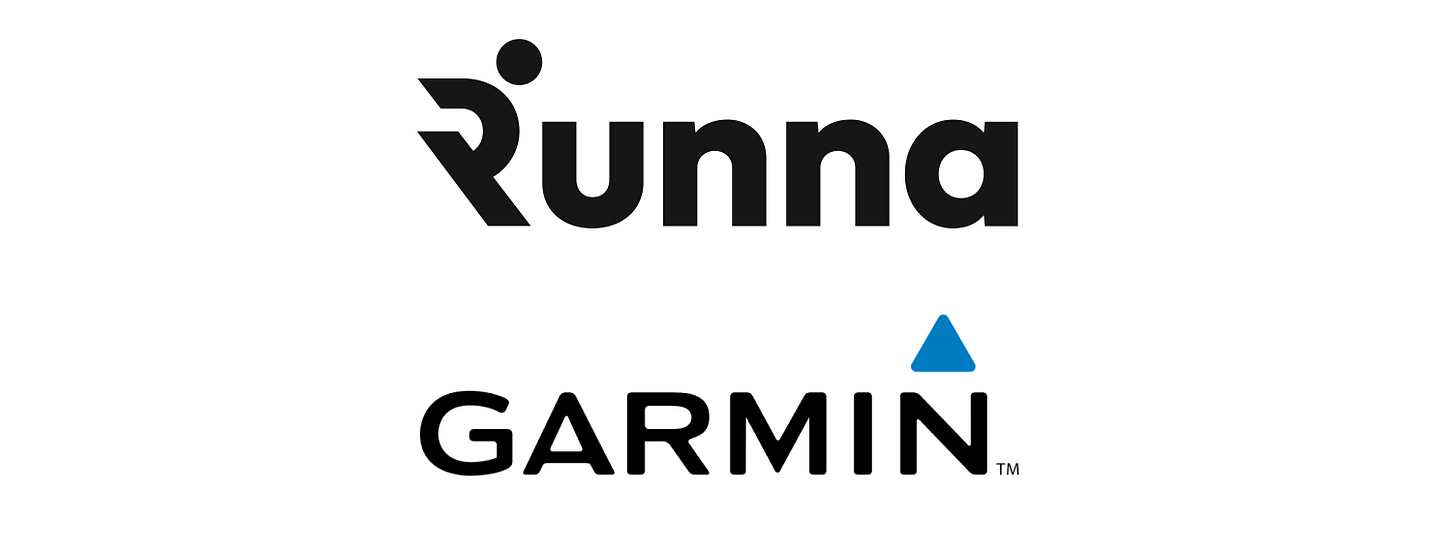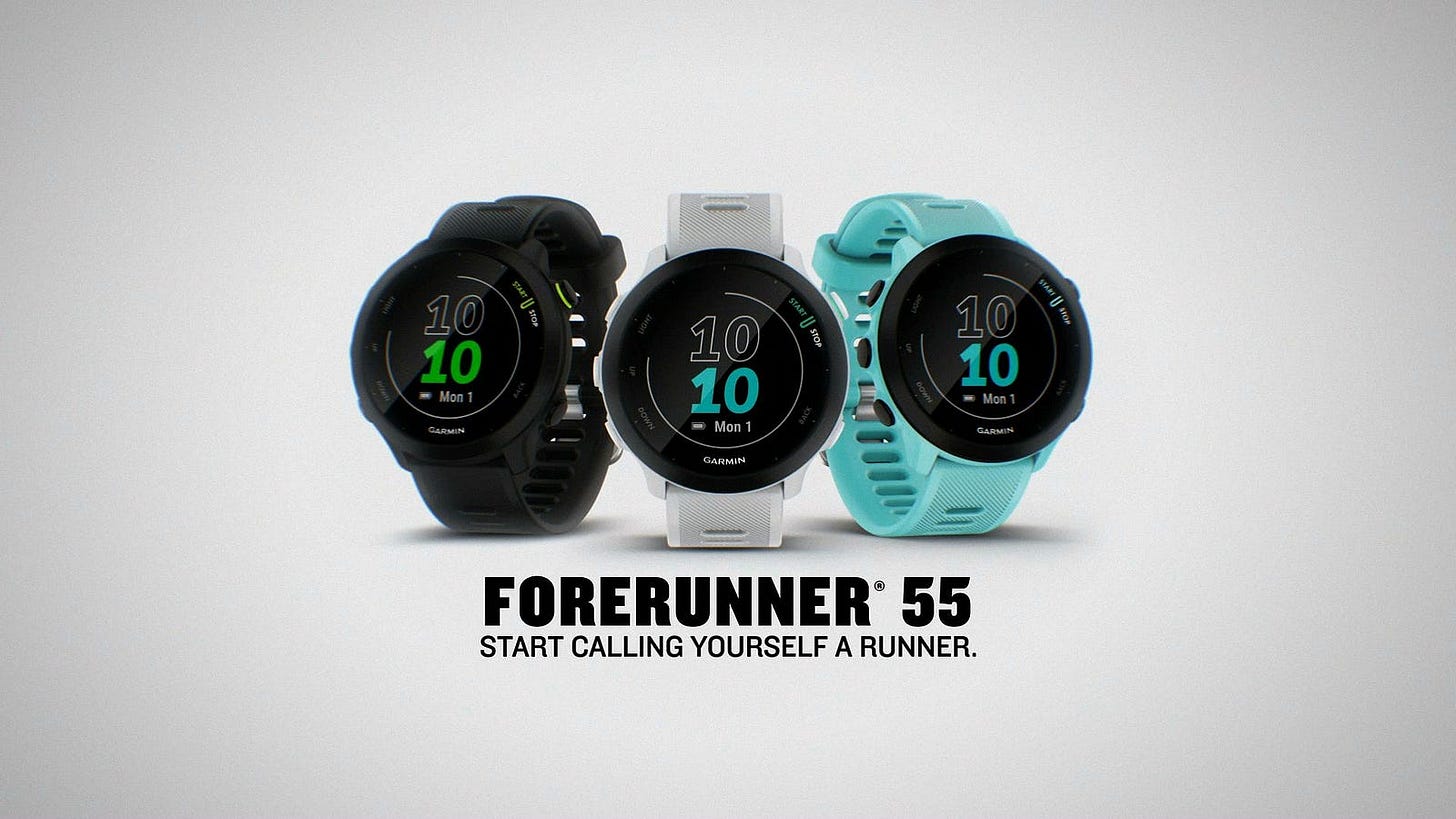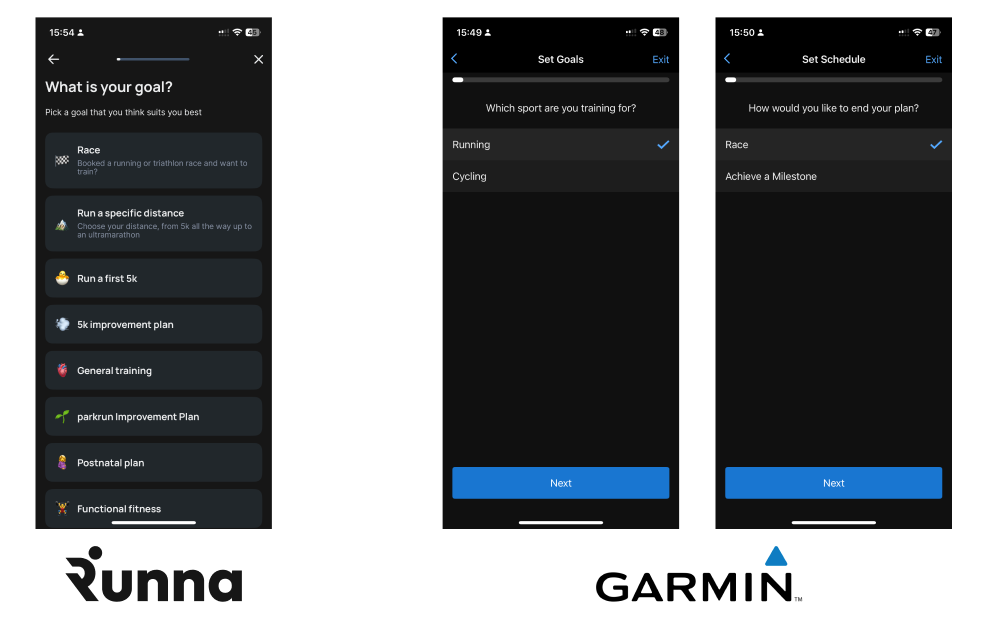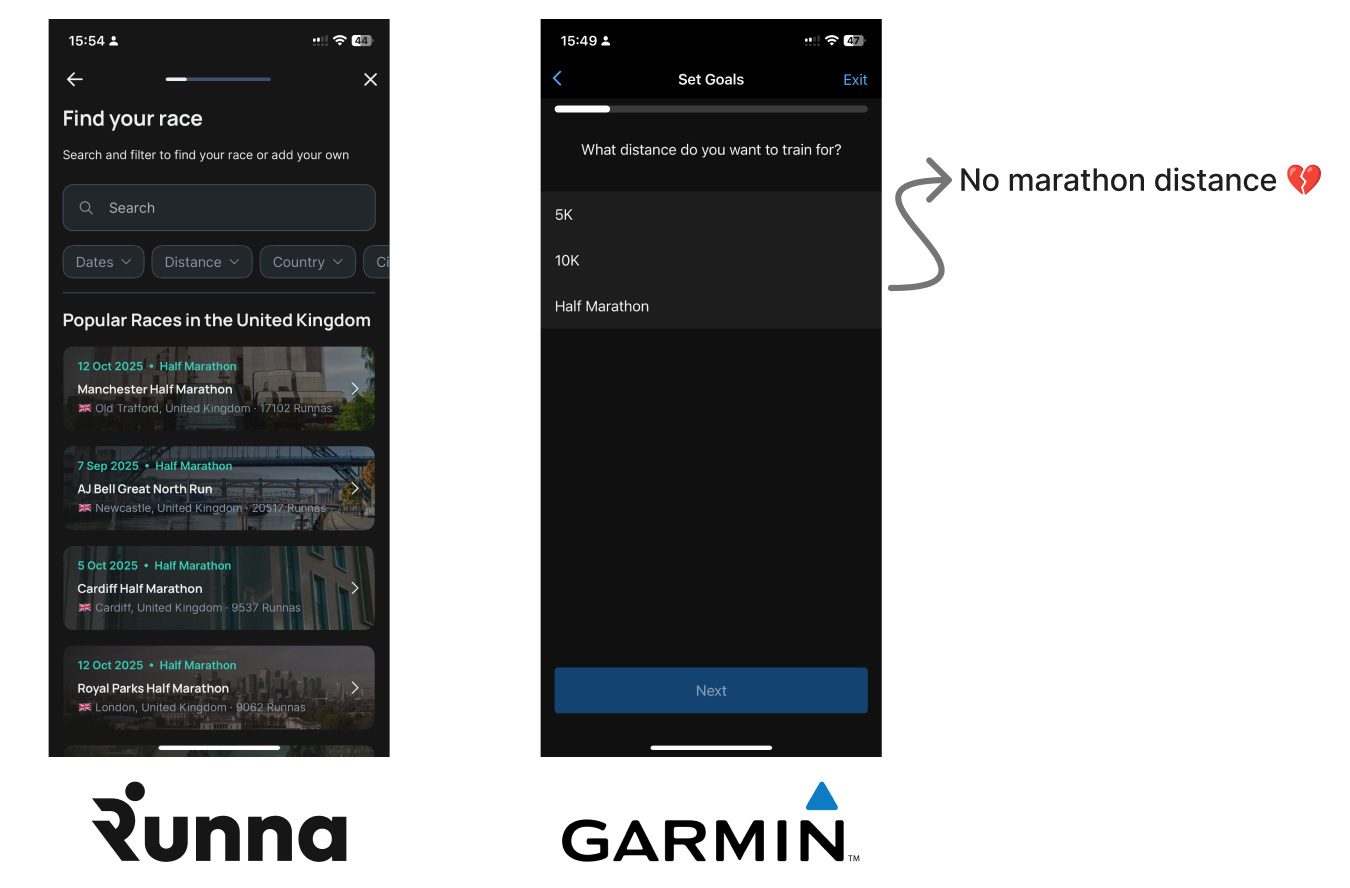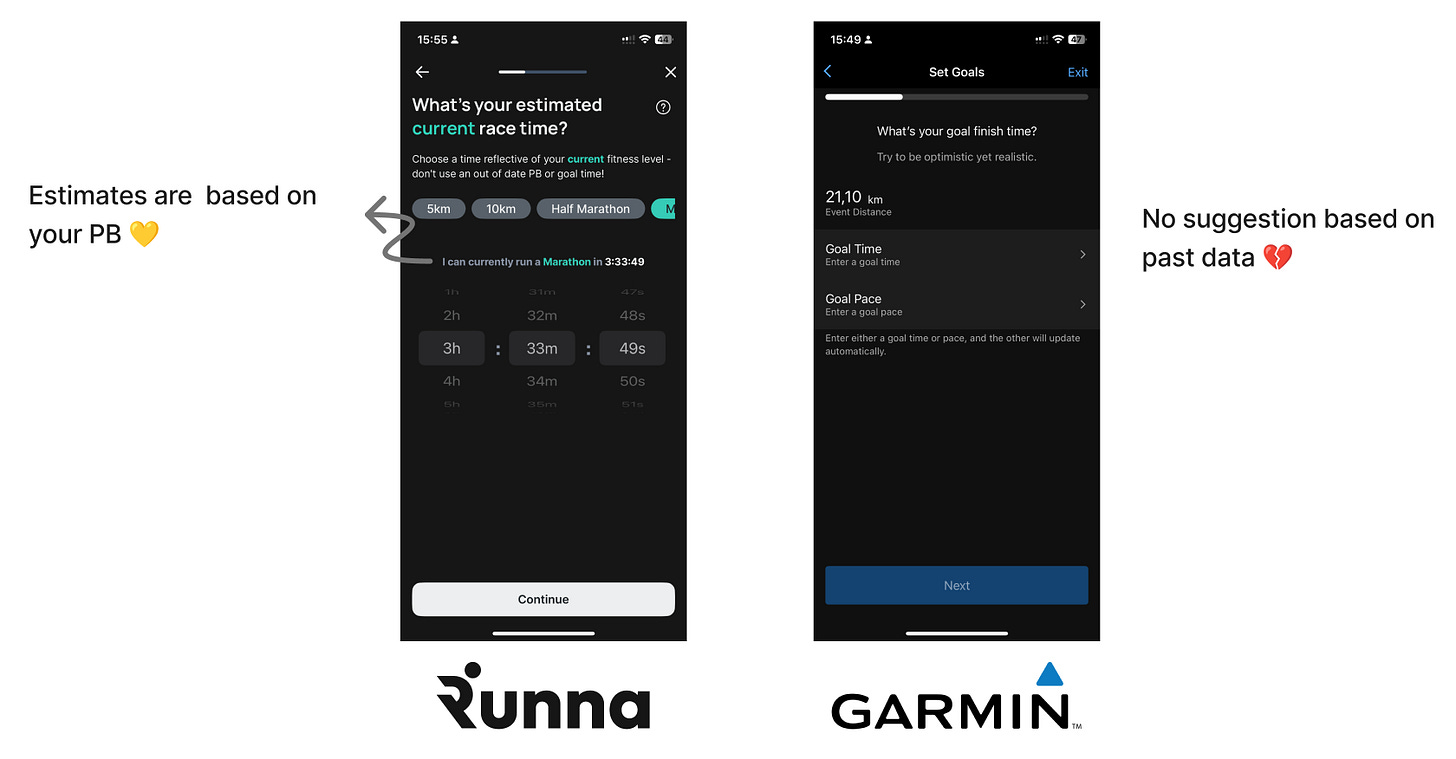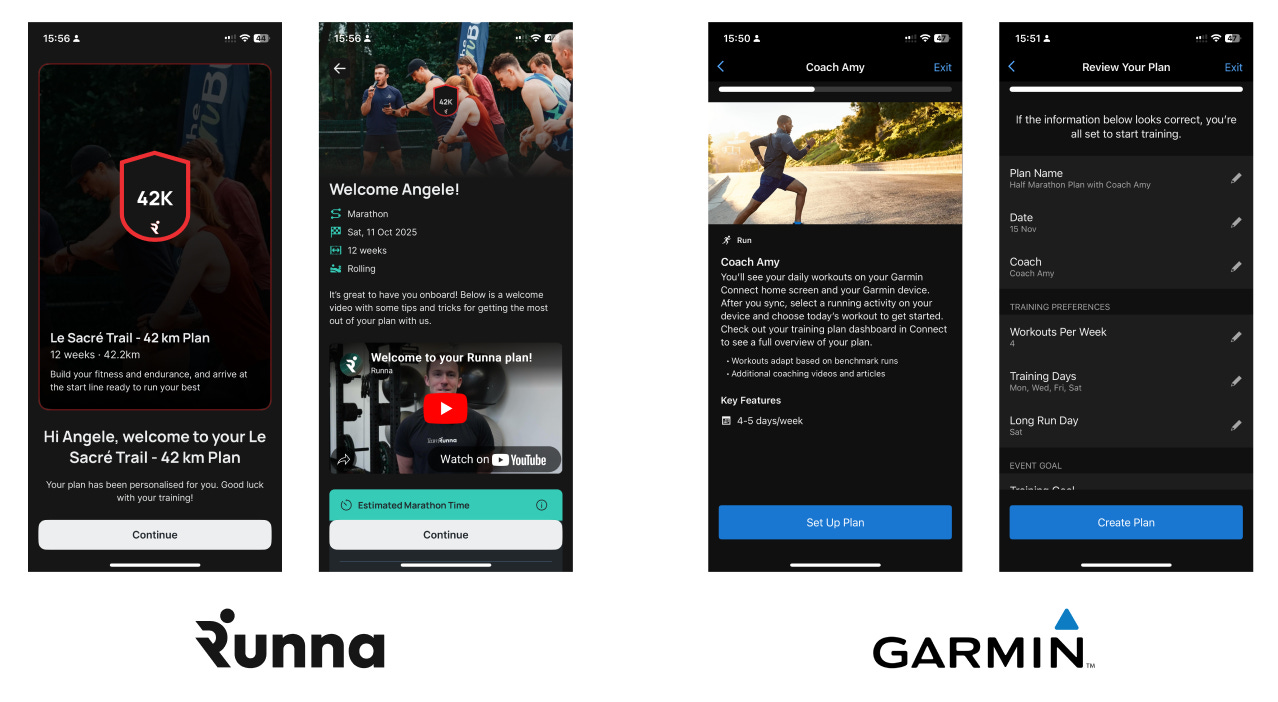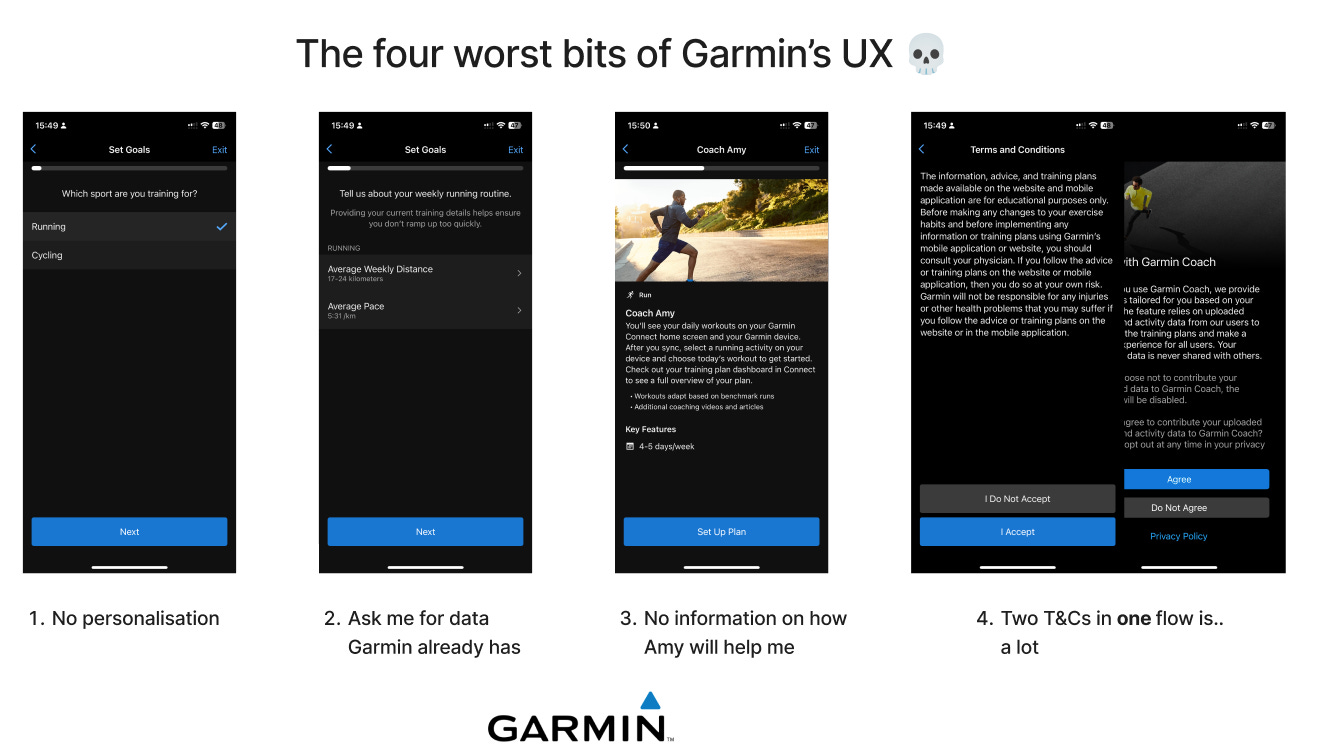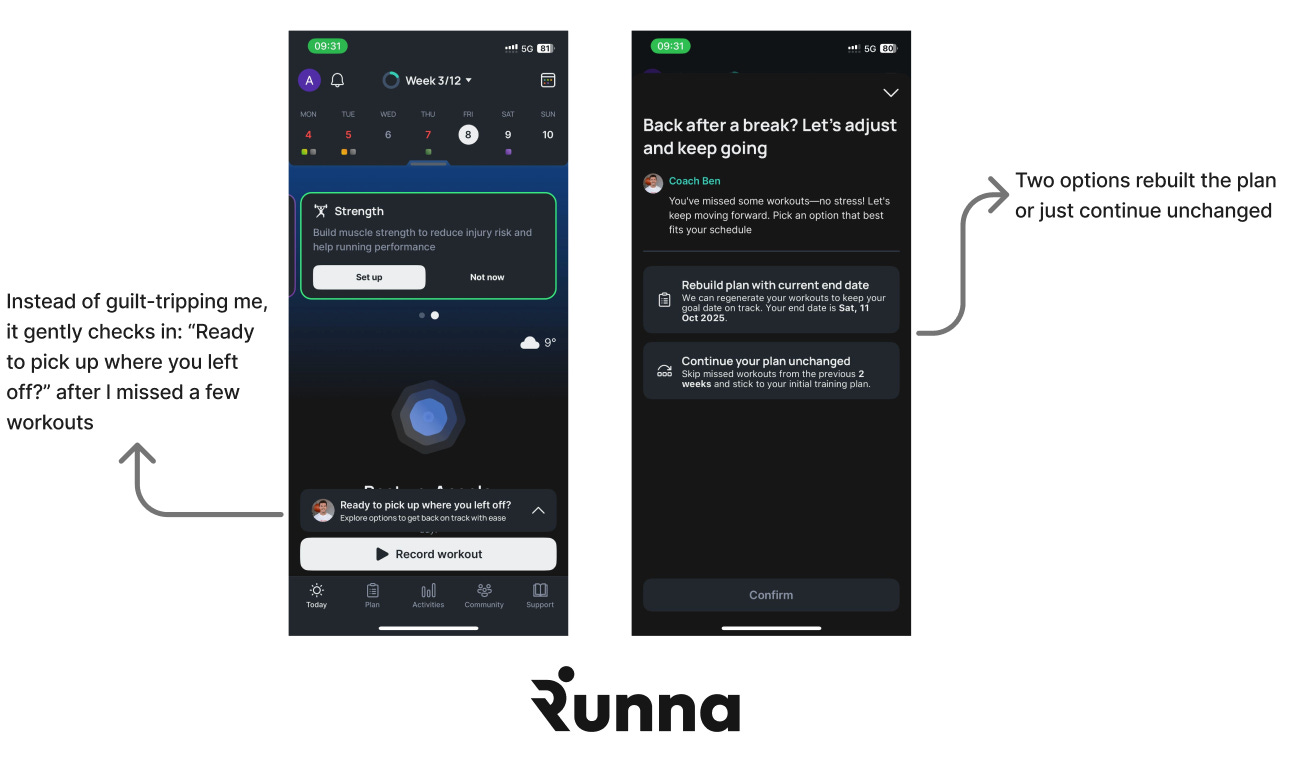Garmin has all my data — so why did Runna build me a better training plan?
How a smartwatch romance turned into a UX intervention
Three years ago, I got a Garmin watch for Christmas.
At the time, I’d already run a few marathons, but I’d never been that person, tracking heart rate, recovery time, cadence… I just ran. But hey, it was a gift. So I strapped it on and quickly turned into the kind of person who wears their Garmin even when walking to the corner shop.
What surprised me was how much I liked it. Seeing my resting heart rate drop? Delicious. Recovery time after a long run? Oddly satisfying. The techy little green lights on my wrist? Very serious vibes. And slowly but surely, I started to think: maybe Garmin knows me.
So a few months ago, while training for the Edinburgh Marathon, I decided to cheat on my Garmin with… Runna. If you haven’t heard of it, Runna is a training app that builds personalised running plans based on your goals, schedule, past performance, and progress. It’s like having a real coach in your pocket, minus the clipboard and ankle socks.
This time around, for my next marathon (it’s in Champagne, if you’re wondering 🍾), I thought: let’s give Garmin a real shot. They have years of my data. Surely they, more than anyone, can build a plan that works for me.
They cannot.
The UX face-off: Runna vs Garmin
Let’s break it down.
Goal-setting
Runna: I’m asked if I’m training for a race, aiming to improve a distance, returning postnatally (respect), or even doing some hybrid functional fitness.
Garmin: “Running or cycling?” Then… “race or milestone?” That’s it. Not even “new parent trying to sneak in runs between naps.”
Race selection
Runna: I typed in the name of my actual marathon. It popped up. Magical.
Garmin: Limited to generic 5k, 10k, and half marathon options. Apparently full marathons don’t exist in Garminland.
Time estimation
Runna: Based on my past runs, they suggest a smart, achievable goal time.
Garmin: Despite wearing my Garmin on every run for the past 3 years , including during multiple half marathons, they suggest… nothing.
Training Plan
Runna: Tailored to me. Starts exactly on the right week to get me ready for race day. Feels challenging but realistic.
Garmin: Pick a coach. Pick a plan. The first run? Nine minutes long… with two minutes of walking. I literally ran a marathon two months ago. What are we doing here?
The four worst bits of Garmin’s UX (I counted)
Lack of personalisation: Still shows me cycling options. I’ve never cycled. Not once. Except a Lime Bike dash to catch the tube in 2021.
Asks me what my running routine is: Hello? You have my watch data?
Coach descriptions: Vibes-y bios, no clarity on how they’ll help me.
Multiple requests for T&Cs + privacy in the same flow: Why are we doing this more than once? Are you okay?
The heartbreaker: Garmin has the data. But not the product.
This is what’s so frustrating: I trust Garmin. I really do. They’ve been tracking my every heartbeat for three years. But when it comes to using that data to coach me? It’s like they forget everything they know.
Some hypotheses, if you’ll indulge me:
1. Legacy systems & slow iteration
Garmin’s software just doesn’t evolve at the same pace as the data it collects.
2. Coach-centric, not user-centric
Their plans are built by a handful of coaches. Great for brand, terrible for flexibility. The experience feels like: “Here’s what Coach Jeff thinks you should do”, not “Here’s what you need based on how you’ve been running lately.”
3. Risk aversion
Better a one-size-fits-all plan than an overfitted one, right? Wrong. Runners can tell when a plan’s phoning it in.
4. Hardware > software
Garmin’s real business is watches, not coaching. The app experience feels like a feature they’re stuck maintaining, not something they’re investing in.
What Runna gets right: designing with data and empathy
Let’s give flowers where they’re due.
Real-time adaptation: Miss a session? It adjusts. Feeling off? It slows you down. For instance, I missed a few workouts recently because I got ill, and when I came back, Runna immediately asked if I wanted to readapt the plan based on the missed runs , or stick with the original version. It felt like the app was actually looking out for me, not just following a script.
Goal clarity: You always know why you’re doing each workout.
Conversational UI: The setup feels like a chat with a coach, not a dusty PDF from 2012.
Momentum: Runna’s growing fast. You can tell they’re iterating, testing, improving constantly. It feels alive.
Runna manages to build trust and in a space as intimate as training your body for a marathon, trust matters more than stats.
Garmin still tracks every run I do, but Runna tells me what run to do next. And that’s the gap.
So what? Runna didn’t just build a great product, they filled a gap no one else saw
The more I think about it, the more obvious it feels: Runna is thriving because every other training plan is stuck in the past.
Garmin, Polar, Coros… most of the big players built their coaching features as an afterthought to their hardware. Their training plans still feel like PDFs dressed up in UX from 2015. Smartwatches have evolved. Runners have evolved.
Runna saw the gap. A product that starts with user context, uses real-time data, adapts like a real coach, and feels good to use? Groundbreaking… mostly because no one else bothered to build it.
And it’s not just running.
You can feel this same gap in:
Sleep coaching: why is every app still giving generic advice like “get 8 hours” when they have my REM cycles?
Nutrition: macro trackers are plentiful, but where’s the real-time plan that adapts to me, not a calorie calculator from 2009?
Financial coaching (👋 Cleo AI!): the potential is massive, but most tools still feel like spreadsheets with emojis.
There’s a product pattern here. When a legacy platform collects data but fails to do something smart with it, it leaves the door wide open for someone newer, faster, and more empathetic to walk in.


